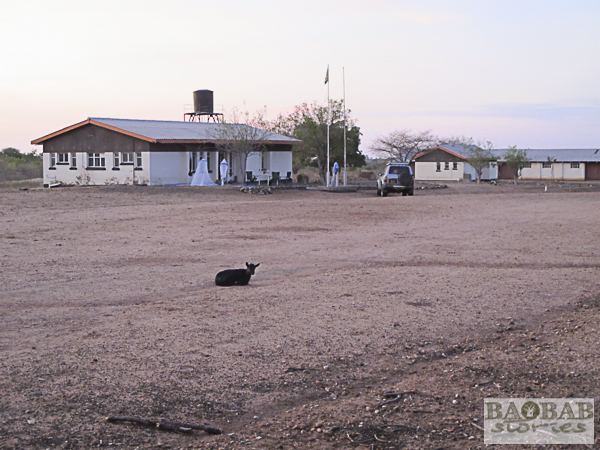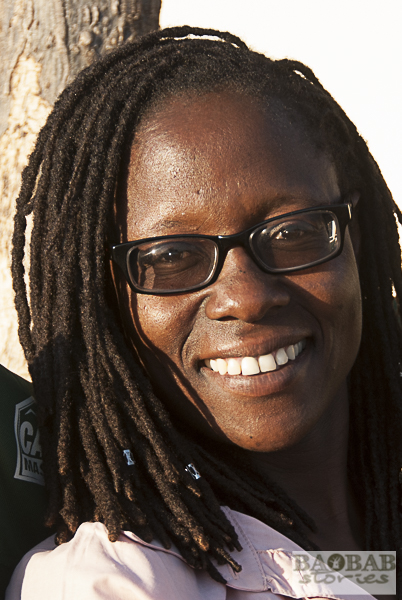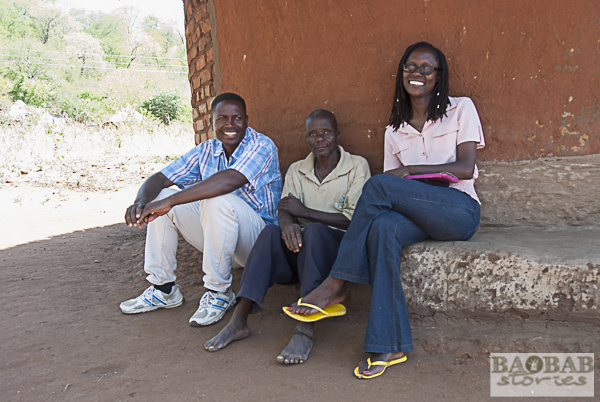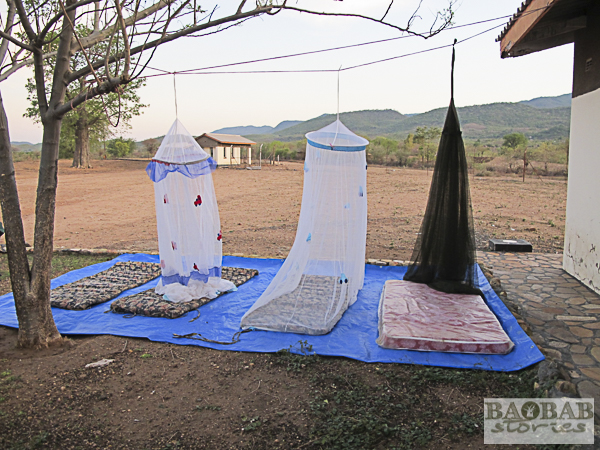In her furious red glow the sun slowly moves towards the horizon. An excruciatingly hot day comes to an end – and we finally arrived at Kamutsenzere near Mount Darwin in Zimbabwe. Not much is yet to be seen from our accommodation – except a large gate that protects simple building structures from uninvited visitors. A friendly man opens and allows us in.
The gate belongs to the grounds of the local grain marketing board depot where baobab fruit – among others – are collected. The simple and sort of rustic looking structures is where we will set up camp for the night. There are no hotels in this area and it is up to us to make ourselves comfortable.
I cannot imagine to spend the night indoors in one of the overheated buildings. Every movement is difficult in the heat that is so persistent. As things turn out there is no shower and no running water. At least we have some cool drinks. This year the rains have not come and the region groans under a severe drought.
First, we – the team that accompanies me to the baobab collectors in the area – take care of dinner. On board is Fran Patsika who is an administrator for B’Ayoba in Harare. She has started to cut vegetables for our salad.
Apart from her work she studies women and Gender – focusing on roles of women in society. As it turns out in the course of our conversation the topic is relevant particularly for the work B’Ayoba does in rural areas.
Opportunities are Scarce
B’Ayoba buys baobab fruit from small farmers and has only recently started business activities around Mount Darwin. As part of the business procedure small scale farmers are required to register with the company and before the fruit changes ownership, contracts have to be signed. In the very beginning more than 90 % of the registered baobab fruit collectors were men.
As Patsika recollects this factor is not at all unusual. The area does not provide many sources of income and any new opportunity promising money is readily accepted. On the other hand, collecting fruit was a task of women traditionally. It is done manually and requires no use of machines – which makes it unattractive to men. Men rather handle technical equipment and machines – if they are available.
B’Ayoba staff was surprised to find a total change in the numbers of people delivering the fruit. While initially mainly men had registered for cooperation, ultimately more than 90% of women came to exchange fruit for money, Fran Patsika noted during her visit in September 2015. In the first year most of the women delivered the fruit under the contract numbers of their husbands. Meanwhile the women have their own contracts. Today the company works with more than 90% women and only very few men.
New Income Opportunities with Baobab Fruit
Apart from collecting fruit, B’Ayoba has set up a small factory on the site of the grain marketing board for baobab fruit processing. Mainly female employees crack the fruit and remove the fruit powder and seeds which are sold at local markets.
The women earn additional income and are excited about the fact that they become more independent of their husbands income. “[Women] have told me that they are very happy about the extra income. They are grateful because previously they did not have their own money and are now able to send their children to school”, says Patsika.
Women are faster handling Baobab Fruit
“One thing we have learned is that women are faster at processing the fruit,” Patsika states another important point. “I think it comes from the chores that they do at home so they are adept at it – it is easy for them,” she adds.
Time runs fast and while we are happily chatting away we missed an extraordinary sight taking place at the baobab nearby. Earlier in the afternoon we saw that some of the flower buds were ready to open around sunset. One has to monitor the process closely because the event takes place within seconds: the petals open like umbrellas. We were too late and I strongly suspect that the heat in the area had contributed significantly to speeding up the process.
The air is still hot and temperatures inside the buildings remain unbearable – they still seem to be way above 50 ° Celsius. After a delicious dinner we decide to set up our camp outdoors. We spend the night under an impressive starry sky – who needs a 5-star hotel? What a thrilling and extraordinary experience!








Pingback: Selling Baobab Fruit: Chief Chiswiti explains - Baobab
Pingback: Rerai Mundengoma: Baobab Helps Women - Baobab
Pingback: Baobab is Much More Than a Relish - Baobab